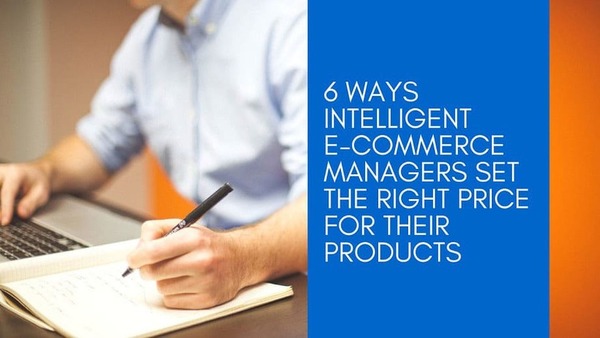With all this being said, here are some ideas retailers must consider when outlining and setting their pricing strategies.
Business Goals
This point may seem obvious but many retailers lack clarity around their goals, targets, objectives or priorities. What is the point of this whole pricing exercise? What are you actually trying to achieve? Retailers really must understand what they are actually trying to achieve in the marketplace and within what timeframe. This brings into play seasonal, short, medium and long-term goals which will impact their margin and revenue targets.
Let’s start by setting Specific, Measurable, Attainable, Realistic and Timely (S.M.A.R.T.) goals. Consider setting milestones and targets based around objectives to ensure that the business remains competitive and most importantly, profitable. These milestones should be reviewed within an allocated timeframe which will undoubtedly differ from business to business.
Wiser retailers also understand the extent of their business capabilities to deliver against set goals. A timely review and assessment of business capabilities will also strengthen the foundations on which S.M.A.R.T goals are built on.
Competitive Pricing
Consumer purchasing decisions are influenced for various reasons and price will ALWAYS feature as the top (or close to the top) influencer on their purchasing decisions. Long gone are the times where retailers spent several hours and days per week manually visiting competitor websites just to check prices on similar products. Not only is this ineffective but also inefficient, hence the mass uptake in full service price monitoring.
Wiser retailers understand the need to gain full visibility on their competitor’s e-commerce activity using intuitive automatch price tracking platforms. They also understand that they can price compare and monitor prices online as much and as often as they see fit, but the real value comes from how they use this data to achieve their desired results be it increased revenues, profit margin or customer loyalty.
Product Cost
Their chosen supply chain will certainly be driven by various factors, from cost of raw materials to assembly (where relevant) to product distribution and warehousing. A retailer’s view on the product cost should not just be one dimensional.
The impact of the supply chain on the product cost is also dictated by the values of the business. Suppliers will also have to be identified and selected based on factors such as price, ethics, working conditions and more depending the retailer’s values.
Business Overheads
So, the production costs have been factored as retailers become wiser around the steps required to set the ‘right’ price but wider business costs cannot be overlooked. Retailers who seek absolute clarity to set realistic prices that truly takes all costs associated with bringing products to market into account understand the need to include as much of their fixed and variable costs in their calculations.
Costs such as marketing, advertising and other such initiatives to staff, utility bills and much more should be factored. Retailers who are able to detail the costs involved benefit from more effective pricing strategies that reflect their objectives while allowing them to execute more realistic pricing strategies that place them in a better position to achieve their profit margin goals.
Brand Position
Retailers also have to consider how they want their business or brand to be perceived in the market place by consumers. This perception will also have an impact on price point for some or all products they carry.
Pricing low could give the perception of a cheaper brand, because most consumers associate higher or premium prices with better quality and more exclusive products. Brands like Apple have made this their brand position across their entire product range.
It wouldn’t be unreasonable for retailers to benchmark their products and brand against others in the marketplace to gauge the competition and the competitive positioning of their business or brand. Full service competitor monitoring platforms provide the quickest and most accurate means for retailers to automatch their inventory against the competition as they aim to leverage every opportunity to gain an advantage.
Ask Customers
The extensive availability and easy access to email and social media has created direct communication channels between consumer and retailer that has no equal in history. More than ever before, retailers and consumers can engage and converse directly and form closer, more personalised relationships.
With this in mind, retailers have consumers at their door step which readily lends itself for customer feedback initiatives where retailers can ask consumers for direct feedback on various product price points as well as other insights that could provide a competitive advantage.
Take Away
When all is done, and the ideas highlighted in this article have been implemented, various simple and not so simple calculations made and a pricing strategy finalised, the only way to find the most effective price strategy for any product at any time is simply to test, monitor it and find your fit.
Remember – Discount pricing is difficult to shift once implemented. This psychologically sticky strategy has long been the nemesis for most retailers as they experience great difficulty in convincing consumers that any increased prices are worth paying.
Low pricing has also proved to be a ‘banana skin’ for many retailers who have failed to calculate the real volumes required for their operation to survive let alone be turn a profit.

(4).jpg)